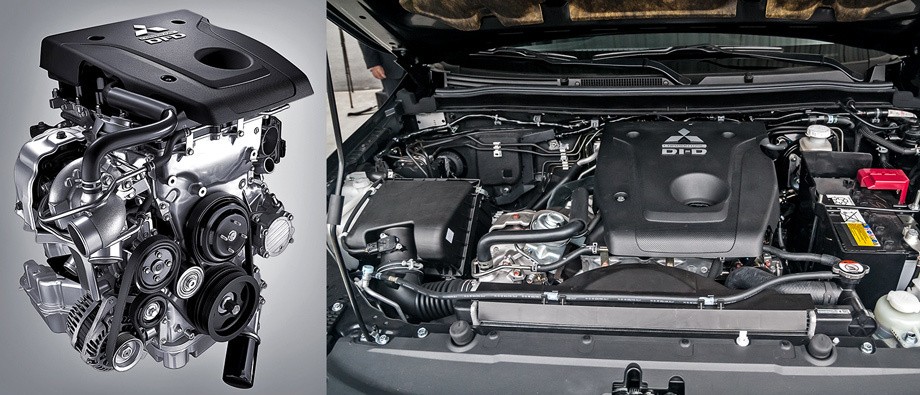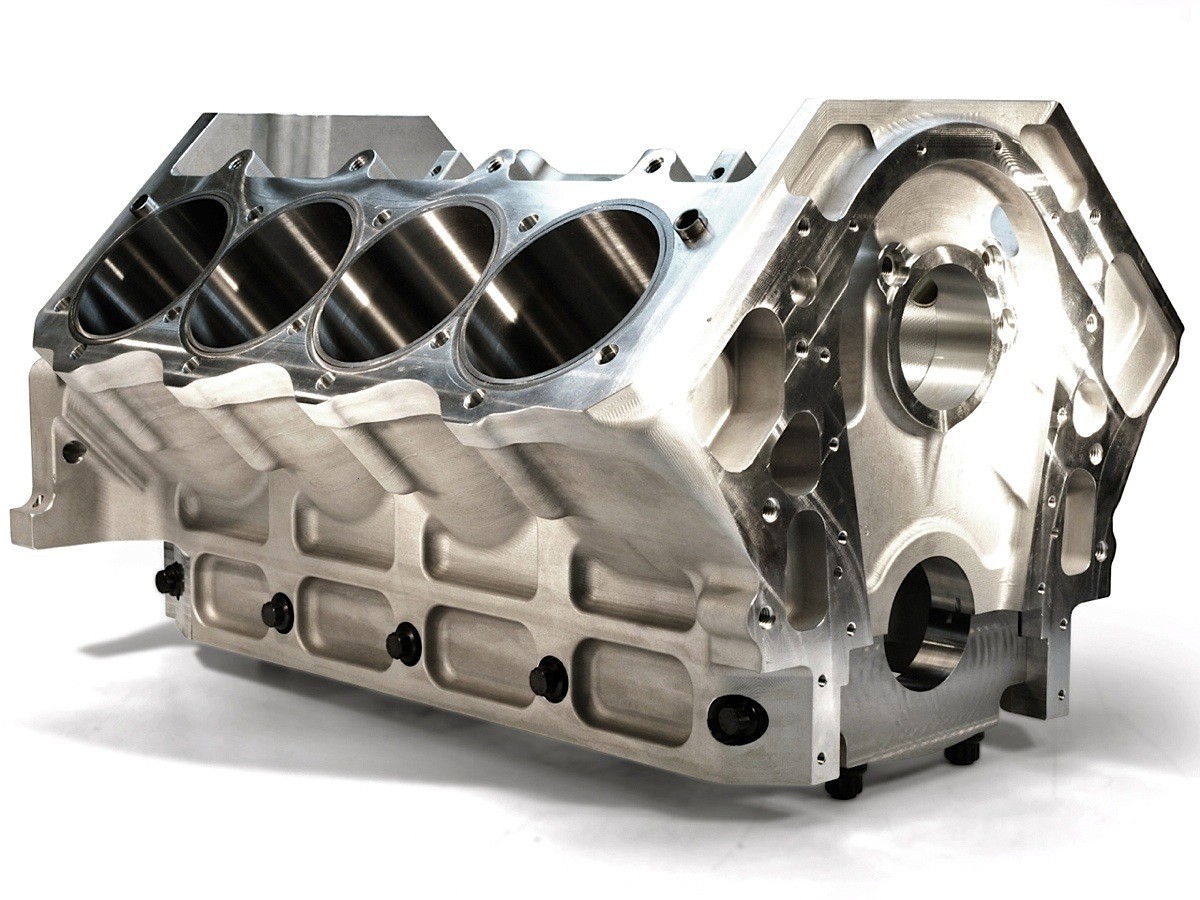
Mitsubishi 4N15 engine
Content
This motor unit was recently highlighted in the press, as it went along with the new L200 pickup truck to our Russian market. As you know, the old Elka had two engines: a 2,4-liter 4G64 and a diesel 2,5-liter 4D56. What changed? Updated power plant for 2,4 liters instead of 2,5 liters. It is with a 3 liter gas distribution system Mayvek. with., more powerful than the previous analogue and develops a high torque of 30 Nm.
Description of the new engine

4N15 is a new 16-valve turbodiesel unit equipped with 4 cylinders. Its volume is 2,4 liters. The engine is equipped with two camshafts and is referred to as DOHC. The power unit is fed by the Common Rail fuel system.
Two gearboxes have been developed in tandem with the engine: a 6-speed “mechanics” and a 5-speed “automatic” with a sequential sports mode.
The 4N15 motor has a 2-stage intake valve setting, and the compression level is lowered. These innovations made it possible to install an aluminum BC, making a lighter engine.
The use of a direct injection system, the resized turbocharger - all this had a positive effect on fuel consumption. So, compared with the previous diesel pickup 178-horsepower engine, the consumption was reduced by as much as 20%, but that's not all. Significantly reduced the amount of CO2 emissions. The torque increased by 80 Nm - instead of 350 it became 430.
| Engine displacement, cc | 2442 |
| Maximum power, hp | 154 – 181 |
| Maximum torque, N * m (kg * m) at rpm. | 380(39)/2500; 430 (44) / 2500 |
| Fuel used | Diesel fuel |
| Fuel consumption, l / 100 km | 7.5 – 8 |
| engine's type | In-line, 4-cylinder, distributed injection ECI-MULTI |
| Add. engine information | DOHC (double overhead camshaft) with MIVEC electronic valve timing, timing chain drive |
| Number of valves per cylinder | 4 |
| Maximum power, h.p. (kW) at rpm | 154(113)/3500; 181 (133) / 3500 |
| Installed on cars | L200, Delica, Pajero Sport |
Differences between 4N15 and 4D56
In their work, both diesels are clearly different. With the new motor, the pickup is more fun, but most importantly, quieter. There are fewer fluctuations, although the vibration of the diesel installation in idle mode is still felt. But a diesel is still a diesel, and this noise is its hallmark, especially if it is put on a pickup truck.

Some difficulties may arise at first from the habit at the start. It will not work to move smoothly on a mechanical gearbox, without jewelry work with the clutch. And most of the owners of the old Elka, who have moved to a new car, will agree with this. Although the fault of the engine is not here, but its mutual connection with the box has become clearly tougher.
It's much more pleasant to communicate with an automatic transmission. Together with 4N15, a 5-speed automatic transmission works on the new pickup truck.
The power of the diesel 4N15 is 181 hp. With. Interestingly, this is not another 4d56 restyling, but a completely new and modern type of “clean” diesel. It was specially prepared for Western markets, and since 2006 there have been rumors about it. However, the engine appeared only in 2010, and it was first installed on Lancer, ACX, Outlander and Delica.
There were also those who accused the MMC concern of downsizing - a deliberate reduction in size in order to improve performance and reduce costs. Well, the motor has become smaller in volume than it was before. However, when comparing the cubic capacity of both engines, a difference of 34 cubic meters is obtained. see, which is not a big difference and there can be no talk of any downsizing.
Oil
If it was possible to pour Mobil 4 56W-1 into 0D40, then this is unlikely to work with 4N15. Recommended Lukoil Genesis Claritech 5W-30, Turbo Diesel Truck 5w-40 or UNIL OPALJET LongLife 3 5W30, as well as other lubricants that fall under these requirements.
- The grease meets the SAE viscosity grade.
- The oil complies with the ACEA (C1/3/4) and JASO classifications.

Other conditions:
- the lubricant should not emit a lot of soot, otherwise the filter will quickly fail;
- the lubricant should be high alkaline, low ash and PAO.
| Gelo | 4N15, turbodiesel 3.oil volume -8,4 l. 80% are in the city, including short trips to work, the rest are long-distance trips and not so much. Long trips in the summer to the south. Hunting, nature fishing, of course with off-road... where would we be without it, and especially now)) I plan to change the oil every 6000-7000 km, depending on the trips and the season, but no more. Less (more often), this is possible..)) Soot DPF. As I understand it, this is also the catalyst? (similar to gasoline) I live in Moscow, so the availability of oils is maximum. For the previous car, I even “extracted” Amsoil)) According to the manual, Fiat recommends for this engine: Selenia MULTIPOWER C3 (F129.F11), That is, in the manual, in the fluid section for a car with this engine, this oil is indicated. But there is also a general section “ Operating materials”, there under the engine with soot (but it is not indicated which engine, but apparently the same one) the following oil data is indicated: SAE 5W30, ACEA C3, specification: 9.55535 or MS-11106, oil brand and designation: SELENIA MULTIPOWER C3 (F129.F11). It would be nice to see what the L200 manual says about oil. But I haven't found where to look yet. If anyone has any, please share the information. |
| Oleg Peter | If strictly according to the manual, then: 9.55535-S3 = VW504/507. Not strictly: 5W-30 MB 229.51. If it’s not at all strict, then: 5W-30 API CJ-4. If the fuel is good and you want to extend life: DPF RN 0720 |
| Foreigner | So far I have experimentally reached the Turbo Diesel Truck 5w-40, I have read about Low Saps...)). Now the dilemma is...DPF or motor..But the mind says - motor! What I mean is that the oils contain low saps, low ash content, etc., and in the end, “castrated” additives... Which is not good for the engine, but if a full set of additives is bad for the soot. But cutting out the soot is easier and cheaper than repairing the engine, which means...we sacrifice the soot. Of course, I won’t pour full-ash ones... but I think at least medium-ash ones, and the alkaline level is at least 8.. I think, based on everything.. it turns out to be some kind of optimal for me. Or is it not working out and I’m thinking in the wrong place? Correct me.. |
| truth seeker | If the fuel is Euro 4 and above, then there are only advantages from MidSAPS / LowSAPS. |
| Insider | According to Shell question. Helix Ultra EKT 5W-30 seems to have died. Instead of it ..EATS C3... It actually also fits, as I understand it?. Only alkaline and acidic are not clear what their composition is. DS is modest. There’s not a lot of topic on it either.. |
| Novice connoisseur | I would advise the tolerance of MV 228.51 with a viscosity of 5w30 from Shell, Lukoil, and the DPF clogs more from malfunctions in engine systems than from the ash content of the oil used. They liked Lukoil and Shell 228.51 in diesels and petrols, in winter liquid ones flow well, they burn reluctantly. Ash content 1 phosphorus 800. It seems like a small amount of esters slips through this formulation tolerance in the tested oils. |
| Samurai76 | Consider also Mobile esp. Very good oil in this category. |
| I do not believe… | Gloryk's list includes ECT C2/C3 0w30 along with analyzes and a bunch of his work. Do you know how to use search? Or follow links? Or google the standards and look for what you like on them? If you expect that you will be persuaded to take a certain oil, then go to the market with this. They hang noodles well there. |
Characteristics of the new business center
The aluminum block is both an advantage and a disadvantage. The idea to reduce engine weight by replacing heavy cast iron with lighter metal in the manufacture of the cylinder block dates back to the distant past, and no one really remembers even the name of the first innovator. However, such a design approach was adopted by many automakers, due to a reduction in weight by as much as three times!
Yes, the cast iron block is stronger, but it quickly rusts and cools worse. Not for nothing, back in the 30s of the last century, an aluminum block was placed on racing cars. The lighter engine cooled faster due to the “wet” sleeves separated from the block body by the refrigerant.
Interestingly, this design was also adopted by the Soviet automotive industry. It was implemented on the Moskvich-412 car, but our engineers failed to completely replace cast iron, since it was extremely difficult to organize from a technological point of view.

Aluminum ICEs have many advantages:
- excellent casting properties;
- low cost;
- immunity to temperature changes;
- ease of cutting and reworking.
Now about the disadvantages of the aluminum block:
- low strength and rigidity;
- imminent failure of the cylinder head gasket;
- increased load on the sleeves.

For conservatives, one of the listed points is enough to refuse to introduce a new design. However, individuals with innovative ideas, who are in the leadership of well-known automobile concerns, managed to pull the blanket over themselves, and some engines of the linear range began to be equipped with such blocks. And the Mitsubishi 4N15 is one of them. And what is there, every year the number of aluminum blocks is growing rapidly.
As for the features of the old cast iron and new blocks.
- The cast iron motor is made from alloy steel, which is then machined. This makes the material super strong and reduces friction. In other words, rings and pistons, being in constant contact with the walls of the block, are unable to quickly eat away at them. Thus, the cast-iron motor unit lasts longer.
- The aluminum block is cast from an alloy with a softer composition, so in order to give the structure the proper hardness, it is necessary to make the walls thicker and add special ribs. Without a doubt, aluminum has the highest degree of thermal expansion, which requires precise control of the gaps located between the elements of the power plant. To increase the resource of such an engine, it is recommended to make pistons and cylinders from non-ferrous soft metals.
- A large mass is the main disadvantage of cast iron blocks. Aluminum, in addition to its smaller mass, has no other advantages over it.
Maintenance and repair
Unfortunately, Russian motorists, who are accustomed to save on fuel and lubricants, do not differ in driving accuracy. This leads to unplanned engine repairs, especially if the latter complies with current European standards, i.e., more gentle and sensitive.

4N15 is no different from its “touchy” counterparts, therefore, at the slightest violation, it causes unplanned repairs. In order for a new motor installation to serve its operational life, the following rules must be observed.
- Use only proven oil, and do not fill in low quality lubricant.
- Timely monitor the timing drive.
- Update spark plugs on time by installing original components.
- Monitor the engine temperature sensor.
- Timely clean the nozzles, which clog faster on a diesel engine.
Do not forget to carry out the next maintenance in official service centers. Modern engines are extremely sensitive to the slightest error, and negligence can easily lead to a major overhaul.

